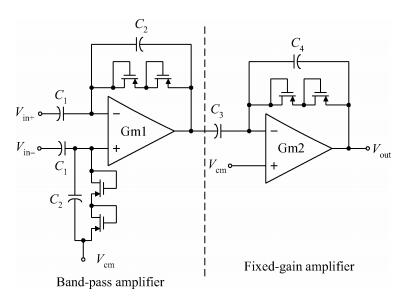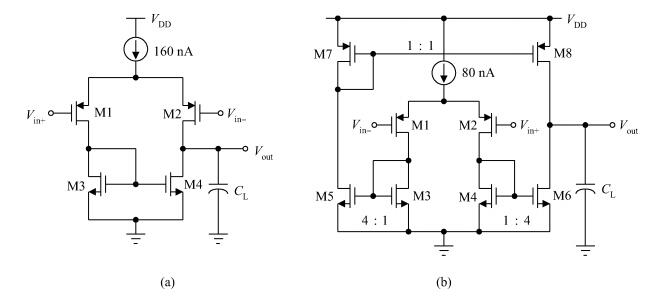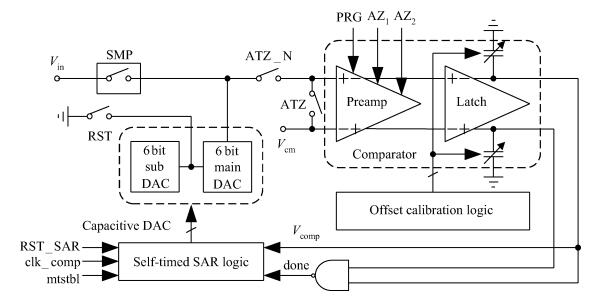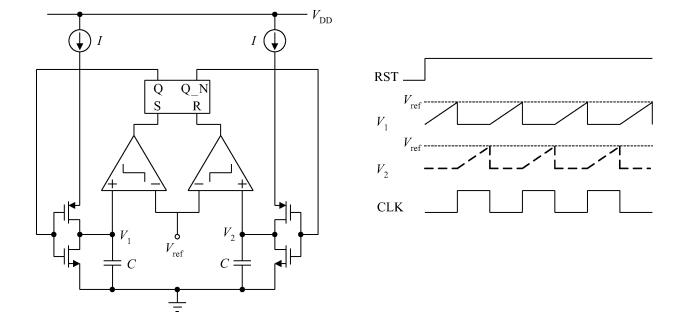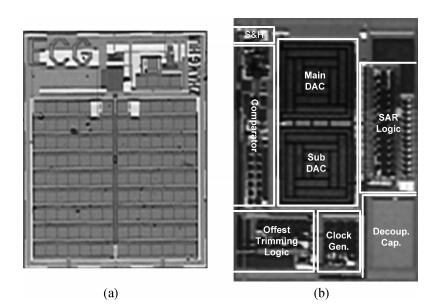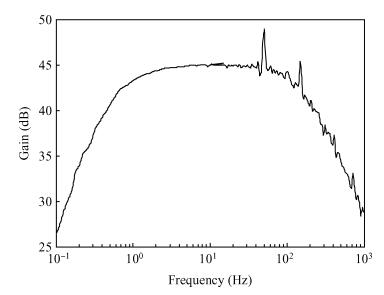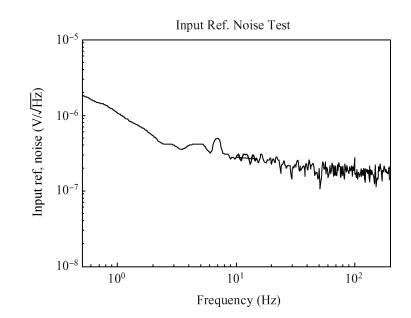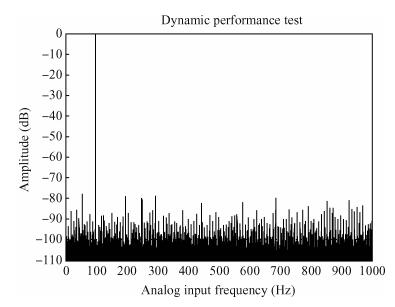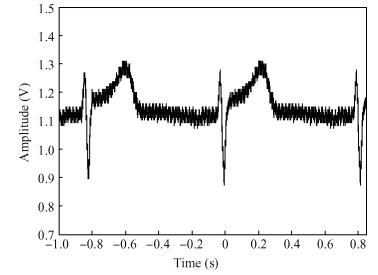| Citation: |
Xiaofei Pu, Lei Wan, Hui Zhang, Yajie Qin, Zhiliang Hong. A low-power portable ECG sensor interface with dry electrodes[J]. Journal of Semiconductors, 2013, 34(5): 055002. doi: 10.1088/1674-4926/34/5/055002
****
X F Pu, L Wan, H Zhang, Y J Qin, Z L Hong. A low-power portable ECG sensor interface with dry electrodes[J]. J. Semicond., 2013, 34(5): 055002. doi: 10.1088/1674-4926/34/5/055002.
|
A low-power portable ECG sensor interface with dry electrodes
DOI: 10.1088/1674-4926/34/5/055002
More Information
-
Abstract
This paper describes a low-power portable sensor interface dedicated to sensing and processing electrocardiogram (ECG) signals. Dry electrodes were employed in this ECG sensor, which eliminates the need of conductive gel and avoids complicated and mandatory skin preparation before electrode attachment. This ECG sensor system consists of two ICs, an analog front-end (AFE) and a successive approximation register analog-to-digital converter (SAR ADC) containing a relaxation oscillator. This proposed design was fabricated in a 0.18 μm 1P6M standard CMOS process. The AFE for extracting the biopotential signals is essential in this ECG sensor. In measurements, the AFE obtains a mid-band gain of 45 dB, a bandwidth from 0.6 to 160 Hz, and a total input referred noise of 2.8 μV rms while consuming 1 μW from the 1.8 V supply. The noise efficiency factor (NEF) of our design is 3.4. After conditioning, the amplified ECG signal is digitized by a 12-bit SAR ADC with 61.8 dB SNDR and 220 fJ/conversion-step. Finally, a complete ECG sensor interface with three dry copper electrodes is demonstrated in real-word setting, showing successful recordings of a capture ECG waveform.-
Keywords:
- ECG,
- sensor interface,
- dry electrode,
- analog front-end,
- SAR ADC
-
References
[1] Pu X, Wan L, Sheng Y, et al. A wireless 8-channel ECG biopotential acquisition system for dry electrodes. IEEE Radio-Frequency Integration Technology Conference, 2012 http://adsabs.harvard.edu/abs/2008SPIE.6931E..0QP[2] Park S, Jayraman S. Enhancing the quality of life through wearable technology. IEEE Eng Med Bio Mag, 2003, 22(3):41 doi: 10.1109/MEMB.2003.1213625[3] Waterhouse E. New horizons in ambulatory electroencephalog-raphy. IEEE Eng Med Bio Mag, 2003, 22(3):74 doi: 10.1109/MEMB.2003.1213629[4] Xu X, Zou X, Yao L, et al. A 1-V 450 nW fully integrated biomedical sensor interface system. IEEE Symp VLSI Circuits Dig Tech Papers, 2008:78 http://www.sciencedirect.com/science/article/pii/B9780124186620000180[5] Yazicioglu R F, Merken P, Puers R, et al. A 200μ W eight-channel EEG acquisition ASIC for ambulatory EEG systems. IEEE J Solid-State Circuits, 2008, 43(12):3025 doi: 10.1109/JSSC.2008.2010844[6] Nemati E, Deen M J, Mondal T. A wireless wearable ECG sensor for long-term applications. IEEE Commun Mag, 2012:36[7] Yan L, Yoo J, Yoo H J. A 0.5-μ Vrms 12-μ W wirelessly powered patch-type healthcare sensor for wearable body sensor network. IEEE J Solid-state Circuits, 2010, 45(11):2356[8] Hoffmann K P, Ruff R. Flexible dry surface-electrodes for ECG long-term monitoring. IEEE Eng Med Bio Soc Conference, 2007[9] Harrison R R, Charles C. A low-power low-noise CMOS amplifier for neural recording applications. IEEE J Solid-State Circuits, 2003, 38(6):958 doi: 10.1109/JSSC.2003.811979[10] Wattanapanitch W, Fee M, Sarpeshkar R. An energy-efficient micropower neural recording amplifier. IEEE Trans Biomed Circuits Syst, 2007, 1:136 doi: 10.1109/TBCAS.2007.907868[11] Shahrokhi F, Abdelhalim K, Serletis D, et al. The 128-channel fully differential digital integrated neural recording and stimulation interface. IEEE Trans Biomed Circuits Syst, 2010, 4(3):149 doi: 10.1109/TBCAS.2010.2041350[12] Zou X, Liew W S, Yao L, et al. A 1 V 22μ W 32-channel implantable EEG recording IC. IEEE ISSCC Dig Tech Papers, 2010 http://www.mdpi.com/1424-8220/15/8/19466/xml[13] Qian C, Parramon J, Sanchez-Sinencio E. A mircropower low-noise neural recording front-end circuit for epileptic seizure detection. IEEE J Solid-State Circuits, 2011, 46(6):1392 doi: 10.1109/JSSC.2011.2126370[14] Wattanapanitch W, Sarpeshkar R. A low-power 32-channel digitally programmable neural recording integrated circuit. IEEE Trans Biomed Circuits Syst, 2011, 5(6):592 doi: 10.1109/TBCAS.2011.2163404[15] Verma N, Chandrakasan A P. An ultra-low energy 12-bit rate-resolution scalable SAR ADC for wireless sensor nodes. IEEE J Solid-State Circuits, 2007, 42(6):1196 doi: 10.1109/JSSC.2007.897157[16] Van der Plas G, Decoutere S, Donnay S. A 0.16 pJ/conversion-step 2.5 mW 1.25 GS/s 4 b ADC in a 90 nm digital CMOS process. IEEE ISSCC Dig Tech Papers, 2006:566 https://www.infona.pl/resource/bwmeta1.element.ieee-art-000001696294[17] Zhang Hui, Qin Yajie, Yang Siyu, et al. A 455 nW 220 fJ/Conversion-step 12 bits 2 kS/s SAR ADC for portable biopotential acquisition systems. Journal of Semiconductors, 2011, 32(1):015001 doi: 10.1088/1674-4926/32/1/015001[18] Wakayama M, Abidi A. A 30-MHz low-jitter high-linearity CMOS voltage-controlled oscillator. IEEE J Solid-State Circuits, 1987, 22(6):1074 doi: 10.1109/JSSC.1987.1052857 -
Proportional views





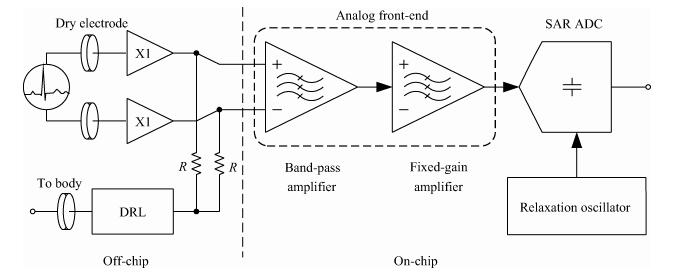
 DownLoad:
DownLoad:
